Pulling on Leg Helps Hip and Low Back Pain
Lower Back and Leg pain
Lower back and leg pain is the most common complaint heard in the chiropractic clinic.
1. Femoral nerve
There is a strong association between what you are feeling in the lower limb and what's happening in the lumbar spine, pelvis and hips; very painful radiating nerve pain emanating from the lumbar spine or the pelvis may cause pain, numbness, weakness and tingling in the feet and legs.
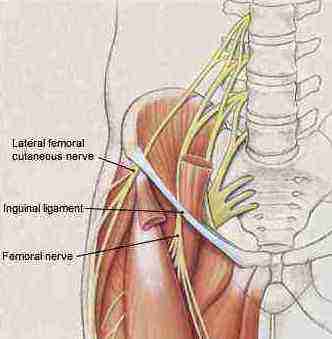
From the mid to upper lumbar spine, a pinched femoral nerve may cause lumbago and or buttock and lower limb pain that radiates along the side, front or inner part of your thigh and down the inner lower leg. It can also cause pain in the groin and even the labia and scrotum.
Early in the condition, the leg may become super sensitive to a pin prick, for example. Later it becomes numb. If there is muscle weakness, it usually affects the quadriceps muscle. The knee will feel like it's going to give on the stairs.
If the femoral nerve is involved then the knee jerk reflex may be disturbed, and weakness of the quadriceps muscle may develop, leading to a marked limp.
You can test the quadriceps muscle by springing on your leg and comparing the strength of the thigh muscle of the naughty leg as compared with the other one.
If the muscle gives at the knee, allowing it to give, then the quadriceps thigh muscle is suspect and you should consider chiropractic help sooner rather than later. Before there are mutterings about lumbar spinal surgery.
Using a needle, lightly prick the side and front of the thigh, and inner lower leg, and compare with the other leg.
But once the muscles are affected the lower back and leg pain will usually be severe, often a deep gnawing, inescapable ache in the limb.
The involved muscles, particularly over the lateral thigh may become extremely sensitive to the touch, with a deep aching pain. Gentle massage down the side of the leg helps.
Meralgia paresthetica and Maigne's syndrome are two conditions causing pain and numbness on the side of the thigh, or groin or front of the leg. Both respond to chiropractic help but often the capsule in the groin must also be addressed.
- Degenerative lumbar disc disease case file
The superior cluneal nerves are supplied by L1 to 3 too and may cause severe buttock pain.
2. Sciatic nerve
From the lower lumbar spine, a pinched sciatic nerve causes lower back and leg pain which extends usually down the back of the leg, reaching into the calf and foot.
- HELP FOR SCIATICA PAIN ...
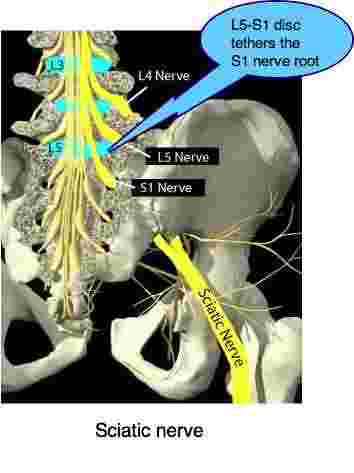
If the sciatic nerve (mainly L4, L5 and/or S1 nerve roots) is involved, then the Medial Hamstring reflex, or the Achilles reflex will diminish. Weakness of the lower leg muscles or great toe may occur. Can you stand on your toes? Raise the big toe? Stand on your heel? If not you should seek Chiropractic help immediately. You are on the verge of lumbar surgery.
Lower Back and Leg pain
Lower back and leg pain go hand and glove together; an irritated or pinched nerve causes tingling, numbness and a deep ache in the limb.
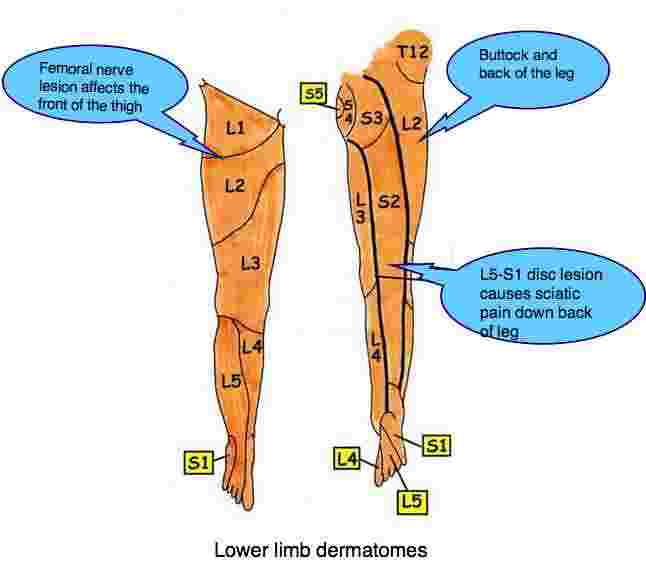
FEMORAL NERVE : Roots L2, L3 & L4 (front and side of the thigh pain especially)
SCIATIC NERVE : Roots L4, L5 & S1 mainly (lower leg and foot pain especially)
Tingling in feet
Tingling in feet and legs, more usually in one limb only, is a common feature of this lower back and leg pain syndrome.
The disc joint (some authorities report that the L4 LUMBAR SPINE is particularly vulnerable), the facet joints, a restricted spinal canal (Lumbar Stenosis) and the Piriformis syndrome can all cause LOWER BACK AND LEG PAIN and tingling in the limbs. So can a host of neurological other conditions. It's best not to jump to conclusions.
- LUMBAR STENOSIS ...
- PIRIFORMIS SYNDROME ...
Slump test for sciatica
A relatively simple tests for a pinched sciatic nerve can be done at home, if you are experiencing lower back and leg pain. Interpretation of the results of the Slump Test for sciatica can be a lot more difficult though; it's work for the experienced clinician.
Test the muscles in your leg
In just two minutes with the aid of a kitchen chair only, you will know if you have paresis in the leg.
- Leg pain muscle testing
- Herniated disc foot drop
To start with, can you raise your big toe off the ground?
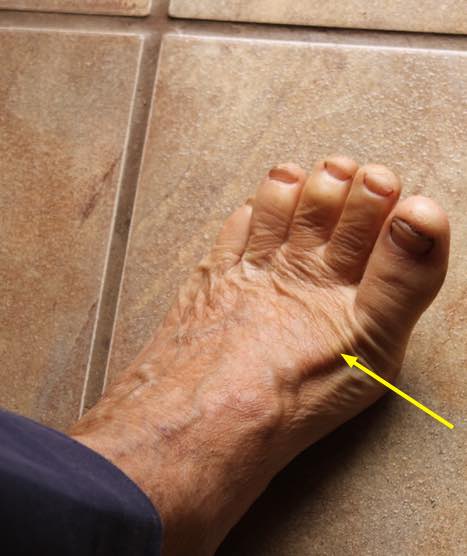
- Read more: TINGLING IN FEET AND LEGS ...
CHIROPRACTIC HELP
There's nothing simple about lower back and leg pain, but I think a series of chiropractic help adjustments is the way to go before having surgery; but then I'm biased, of course.
But seriously chiropractors everywhere have moderate success in the treatment of these chronic lumbar conditions; we don't cure it, any more than your doctor can cure your high blood pressure.
The closest you'll come to a cure is do do follow our lumbar exercise programme faithfully every single morning before getting out of bed; and deciding resolutely not to move deep freezes and grand pianos.
Being able to recognise these slipped disc symptoms should they appear is important.
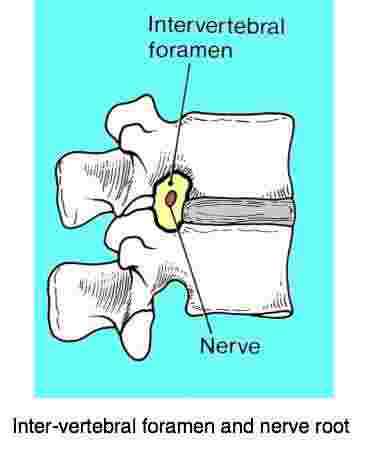
Lower back and leg pain requires first and foremost a careful examination in order to determine precisely where the nerve is being irritated. Is it in the upper, mid or lower lumbar spine? Which level exactly? Could it be a facet syndrome perhaps , or the sacro iliac joint? In the groin? Could it be something more serious, possibly from the prostate gland or a blocked artery? Or perhaps even hip arthritis?
Firstly the physical exam will enable your chiropractor to determine more or less where the problem is. But to be honest, sometimes it is extremely difficult to be absolutely sure which level of the lumbar spine is involved. Quite often more than one disc or facet joint is playing up, giving a distorted or confusing picture.
That's where an xray, and better still a scan can help your doctor narrow down precisely where the problem is.
That is very important, because if she or he considers only sacroiliac joint treatment when the problem is at the lumbar 4 lumbar 5 level, then you probably won't improve.
Vital are exercises and rehabilitation, or the problem is likely to return within a short period if you have had lower back and leg pain.
Even though the pain may reduce quite quickly with chiropractic care, if you have pain radiating down the leg from a slipped disc, then it is best to assume that it will be about two months before you be sure that all is healed.
Reduced sitting, and avoiding couches, deep comfortable chairs and car seats is important. Sitting increases the pressure in the disc and inhibits healing.
Alternating ice and heat is the best painkiller and simultaneously has an anti inflammatory effect.
For more about the lumbar slipped disk syndrome, and a case file, click on the link below.
Good lumbar surgery can produce wonders with a bad lower back and leg pain sciatica where there is significant weakness and numbness in the leg. Immediate relief of pain in the leg is the rule. But if the surgery doesn't go well, then a lifetime of backpain awaits the patient.
These are not chiropractic scare tactics. Complications of surgery and Failed Back Surgery are phenomenon the medical world has written prolifically about. They are not chiropractic phrases, but those used by medical researchers.
Can you wait? is the question. If you can, then consider the back surgeries alternatives first. The New England Journal of Medicine reports on research in which 281 candidates were randomly referred to surgery or alternative care. The surgical group did indeed have much faster relief of leg pain, 4 weeks vs 12 weeks but, and here is the interesting part, after one year, there was no difference between the two groups, and a blinded investigator could not tell the difference. Can you wait?
- Slipped disc symptoms case file
- Sacroiliac joint treatment
You can be sure that after a proper trial period of Chiropractic help your chiropractor will refer you to the appropriate surgeon should s/he not be winning, which is unlikely. We treat sciatica successfully on a daily basis.
One last tidbit. Research shows that if you FIRST consult a chiropractor you are less likely to end up under the knife than if you first consult your medical doctor. LOWER BACK SURGERY
- COMPLICATIONS OF SURGERY ...
- BACK SURGERY ALTERNATIVES ...
LEG LENGTH INEQUALITY
Or in normal jargon, could you have a short leg? Leg length inequality research confirms that it causes not only hip and knee arthritis, but also lower lumbar back pain. It probably ultimately is also one of the causes of lumbar stenosis. Leg length inequality and low back pain are now confirmed to be strongly associated. Not responding to Chiropractic? Has your Chiropractor considered a short leg?
Here is a leg length inequality CaseFile that might interest you.
- LEG LENGTH INEQUALITY RESEARCH ...
Google appears to frown on too many links, so phrases in bold, like these leg length pages above, need to be put into the Site Search function in the navigation bar on your left if you want more information.
Journal of Neurosurgery - spine.
Although 1.5 million lumbar MRI scans are carried out each year for sciatica, at a cost of $1.5 billion, only about 300 000 or 20 percent reveal a herniated lumbar disk amenable to surgery. About one third of the surgeries fail to relieve the sciatica. As a consequence, about 1.2 million or 80 percent receive no clear diagnosis and 100,000 Americans have lumbar spinal surgery that fails.
Every year.
FROM THE COALFACE
Mr Kort ironically is very long. Over two metres tall. For nine months he had dreadful pain last year in the lower right leg. His doctor was convinced that it was a sacro iliac syndrome, but Gert wasn't getting better. In fact it was getting worse. He was limping badly and had to stop his favourite sport, volleyball.
We hit it off from the first consultation. He noticed my tie which has in very faint letters written across it the words Jesus Christ is Lord. Like me, Gert is a Christian.
Whilst he did have a fixation in the right sacroiliac joint, it was immediately clear that this was no sSI syndrome. All the orthopaedic tests were negative, and the test that gives me the shivers was strongly positive. Raising his left leg, produced pain in the right leg; the crossed sign. Otherwise, this was a typical case of lower back and leg pain that chiropractors see on a daily basis. He had a lumbar disc protrusion.
The long and the short of it is that he responded magnificently, if slowly. I made him take two weeks leave, with absolutely no sitting, and then part time for the next month. Within six weeks he was much improved and at twelve weeks had very little pain. He took a mattress to work, and lay down every half an hour for five minutes, and did the exercises I prescribed. More important the crossed sciatic sign became negative, slowly, and the strength returned to his calf muscle. He is again playing competitive volleyball.
The long summer layoff is a problem in Europe; everybody goes on holiday. Gert played plenty of beach volleyball on his vacation with no trouble. But at the first training camp some exercises, not active volleyball, did his back in. They made him do double leg raises, a definite no no exercise. He came in three weeks ago looking like the leaning tower of Pisa. He's fine again, and we are considering whether it's time at 45 to consider stopping competitive volleyball. Certainly there will be no more training camps!
Is this an unfair case to claim a chiropractic success for Chiropractic care of lower back and leg pain? Was it simply help from above? Probably!
Intermittent claudication
Lower back and leg pain may also be caused by an artery in the groin blocked with cigarette ash and cholesterol! The leg pain typically gets worse with exercise. Leg pain .
Smoking is the biggest risk factor in lower back surgery, in fact in all surgery. Low back pain and smoking go hand in hand.
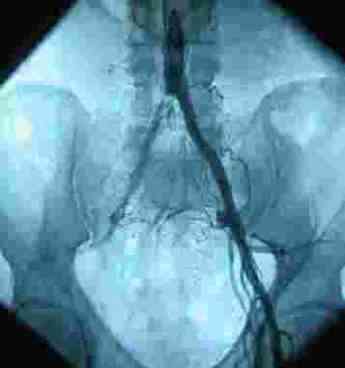
- Intermittent claudication
- Lumbar spondylosis casefile with an associated hip condition
The right bed
Just as important as any of the above is the right bed for your back. Memory Foam Mattresses is something you should consider.
Sacroiliac Joint
The sacroiliac joint is intimately tied up with both the L5-S1 joint, and the hip joint. Without correction of a SIJ fixation both lumbar and hip joint surgery often appear to have failed.
Exercise help
Research shows that those who exercise their lower backs, along with chiropractic help, do better than the latter alone. That in fact is my own personal experience with the health of my own lumbar spine, and nearly forty years in practice.
Four years ago I myself had a very serious lumbar herniation causing severe pain and paresis down the course of the femoral nerve. It was really a surgical case, with a so-called sequestration into the spinal canal; I was saved by superlative chiropractic treatment, a realisation I had to stop and exercise help.
Now I never miss the lower back exercises you can find in the navigation bar; but I do a lot more than that, and so should you. This Beginner Ab Workout is worth a consideration; take it easy, you're not going to the Olympics!
USEFUL LINKS
- Slipped disc and leaning AWAY from the side of pain? Postero lateral disk herniation
- Slipped disk and leaning TOWARDS the side of pain? Postero medial disk herniation
- Short anecdote on severe leg pain with no low back pain. Short anecdote Scroll down to 18-03-2009.
- Go from LOWER BACK AND LEG PAIN to more info about low back pain
Stones in my Clog

Mostly, folk know very little about what actually goes on in a Chiropractic Clinic. They may have heard... bones get cracked, ribs may be broken, risk of a stroke... find out what actually happens in Stones in my Clog.
Follow me, Bernard Preston DC, during my seven year sojourn in the Netherlands. A terrifically bumpy and very fulfilling ride! A very tough language is the start; Dutch is reputedly the third most difficult language in the world.
Read this tidbit about a cyclist who got severe pain in the thigh when cycling. Everyone thought it was a Femoral nerve lesion, but no...
- Something predictable, Something surprising at intermittent claudication.
Only $2.99 on your smartphone or Kindle...
Did you find this page useful? Then perhaps forward it to a suffering friend. Better still, Tweet or Face Book it.
Pulling on Leg Helps Hip and Low Back Pain
Source: https://www.chiropractic-help.com/lower-back-and-leg-pain.html
0 Response to "Pulling on Leg Helps Hip and Low Back Pain"
Postar um comentário